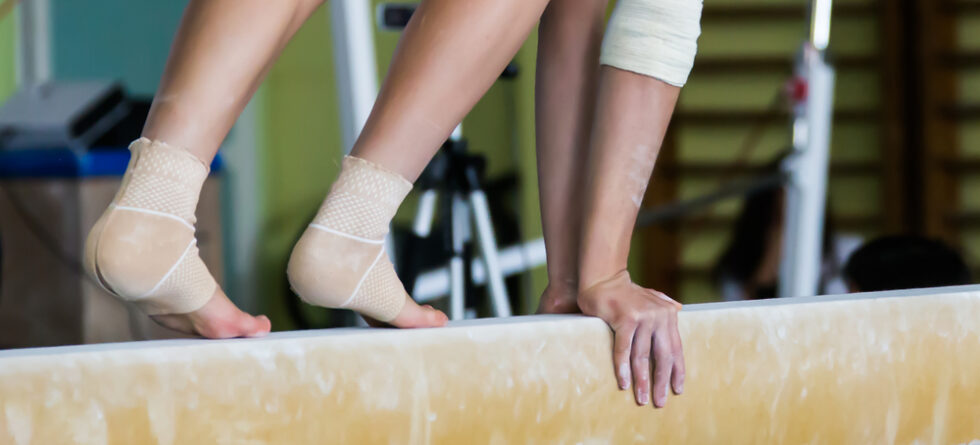Gymnastics is a physically demanding sport that involves a wide range of movements and maneuvers, and like any sport, it carries the risk of injuries.
While the severity of injuries can vary, some of the worst injuries in gymnastics can include…
- Spinal Injuries – Severe falls or awkward landings can lead to spinal injuries. These injuries can range from fractures and dislocations to more serious spinal cord injuries, which can have long-term consequences.
- Head Injuries – Falls and collisions can result in head injuries, including concussions. Concussions can have both short-term and long-term effects on an athlete’s health.
- Fractures – Gymnasts are at risk of various types of fractures, including broken bones in the arms, wrists, legs, and ankles. These injuries can be painful and may require surgery and extended recovery periods.
- Ligament and Tendon Injuries – Sprains and tears of ligaments (such as the anterior cruciate ligament, ACL) and tendons (particularly in the knees and ankles) can be debilitating and often necessitate surgery and extensive rehabilitation.
- Dislocations – Dislocations, particularly of the shoulder and elbow joints, can occur due to the high-impact nature of gymnastics. These injuries require prompt medical attention to reduce and stabilize the joint.
- Overuse Injuries – Gymnastics places significant stress on the body, and overuse injuries are common. These can include stress fractures, tendonitis, and repetitive strain injuries in areas like the wrists, shoulders, and ankles.
- Achilles Tendon Rupture – Gymnasts performing high-intensity jumps and landings may be at risk of Achilles tendon ruptures. These injuries can be painful and may require surgical repair.
- Spinal Stress Fractures – Gymnasts who repeatedly perform high-impact skills may develop stress fractures in the spine, particularly in the lower back. This condition, known as spondylolysis, can be painful and may require rest and rehabilitation.
- Cuts and Abrasions – Gymnasts may sustain cuts, abrasions, or lacerations from contact with equipment or the floor exercise area. While not as severe as some other injuries, these wounds can still be painful and require proper wound care.
- Psychological Injuries – In addition to physical injuries, gymnasts may experience psychological injuries, such as performance anxiety, fear of certain skills, or stress-related conditions due to the pressures of competition and training.
Gymnastics coaches, organizations, and medical professionals prioritize athlete safety. Proper training techniques, skill progressions, equipment maintenance, and injury prevention programs are integral to minimizing the risk of these injuries. Gymnasts receive regular medical evaluations to detect and address potential issues early.
Athletes and their coaches should work together to ensure a safe training environment and take necessary precautions to prevent injuries. When injuries do occur, prompt and appropriate medical care is essential to facilitate proper healing and rehabilitation.




